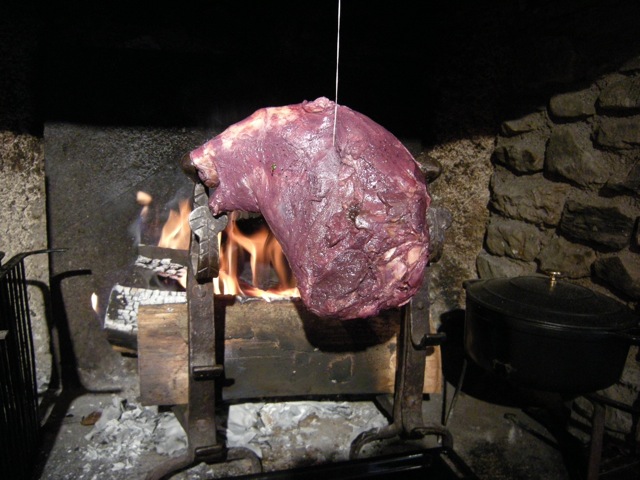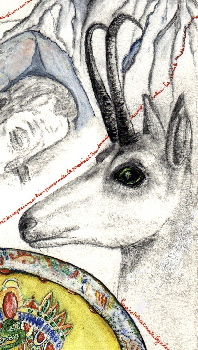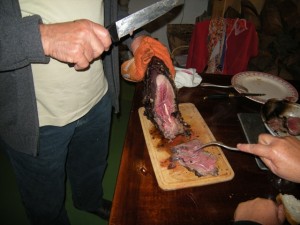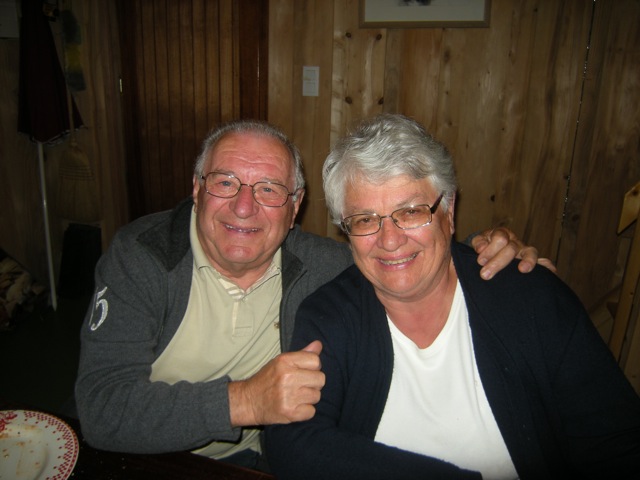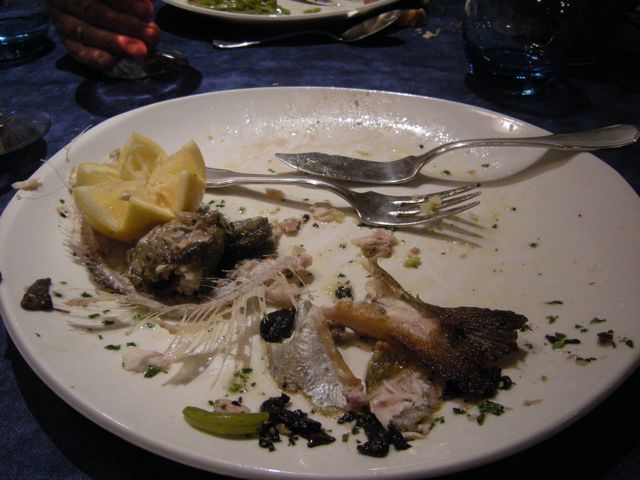
August 21st 2009 / Lunch Time
Culinary Institute of America
The American Bounty Room
I am back in the Mid-Hudson Valley to accompany Miles for the last three days of the Muttnik shoot. I cannot resist returning to the C.I.A. This time I’ll have lunch at one of the “big” restaurants, preferably at the “Escoffier” or the “Villa de Medici.” No, I didn’t make a reservation and therefore I will not be “accommodated” in either of these rooms. Now my choices are: the “American Bounty Room” or return to the “Apple Pie Bakery Café.” No hesitation, I am on my way to the “American Bounty room.” I am ushered to a table for two facing the open kitchen. The setting before me is removed; I sit on the banquette across the “Julia Child Rotisserie Kitchen.” Two rows of antique rolling pins frame the sign. Below it, two impeccable pastry students are busy setting up dessert plates. The reverent & courteous student/waiter brings me the menu and offers cocktails. A quick look confirms that I will have the Dr. Frank Rkatsitelli, Vinifera 2006 from the Finger Lakes. I have read the online wine and lunch menu; it is easy for me to scan through and to decide on:
Sautéed Halibut ($16)
Sweet Manila Clams, Soffrito Rice, white Wine Broth
(sorry no pix, remember? not allowed inside the school)
And then starts an annoying conversation with two of my selves (I’m a Gemini):
Moi 1: “I am really overindulging by coming twice for lunch at the CIA in the same week.”
Moi 2: “But, I am here for a reason.”
Moi 1:“Oh! Yeah and what is the reason?”
Moi 2:“ Well, I’m gonna write about it on my blog!”
Moi 1: “Again?”
Don’t get me wrong, I do enjoy writing the blog, but sometimes it feels like self-inflicted homework. English is not my first language and I am not a born writer. Why do I do it then? In different ways, whether I draw, sing or write, I find myself doing the same thing: I dwell on a particular situation and seek its “essence.” Using the blog gives a very convenient format, as it allows for all my interest to converge. But today feels like having a “still day.” I put my pen down, close my notebook and sip my wine.
Yum! the wine is crisp, clean & light. It reminds me some of the wines from Luxembourg. Rkatsitelli is an ancient grape from Georgia (Old world not USA!). I had it once before and liked it. Dr. Konstantin Frank wines are always interesting.
What is that human barking coming out of the kitchen? Every time one of the kitchen doors opens — there is one on each side of the kitchen window, one to get in & one to get out — we can hear the “aboyeur” (literal translation: the barker) dispatching orders. In this case an “aboyeuse” as it is a female announcing the orders to the appropriate station of the kitchen. This is a strategic position in a brigade system kitchen. Wow! I am having a flashback, and next thing I know I pick up pen and notebook:
I am a little girl in the corridor of the “office” of the family hotel. The “office” was the upstairs kitchen where some dessert and cold foods were prepared and most of all where the manual dumb waiter delivered the food from the downstairs kitchen. The orders were shouted into a speaker-phone. Then one copy of the order slip was sent down, the first carbon copy pinned on to the board next to “le passe” —that’s how we called the dumb waiter— , the third carbon copy was kept by the waiter to add any supplements and then sent out to the cashier to make the bill.
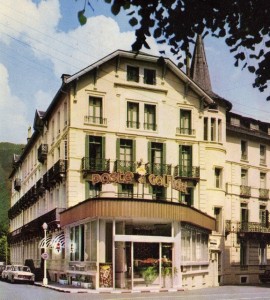 I was born in this hotel, in my parents’ bedroom just above the action and almost in the midst of it. It was June 18, 1960 at noon; the restaurant was running at full capacity. There was a banquet for a 100 top, the annual banquet luncheon for the Master Accountant Guild of the Southwest France region. The interesting fact is that my maternal grandfather, Maurice Gallot, was the president of the guild! My father didn’t get to see me until after the banquet was under control. My mother and I were in good hands between the midwife and her uncle who was a surgeon. My mother still remembers that my maternal grandfather bought champagne for the entire party! As far as the memory of the birth itself is concerned, she would always say: “C’est le mal joli, quand c’est fini on rit!” “It’s the pretty pain — once it’s over one laughs!.” She is always very positive! In case you are curious to know what was served the day of my birth, here it is taken from my grandfather agenda/menu book. The left side of the page is the regular Menu du Jour and the right side is the menu for the banquet.
I was born in this hotel, in my parents’ bedroom just above the action and almost in the midst of it. It was June 18, 1960 at noon; the restaurant was running at full capacity. There was a banquet for a 100 top, the annual banquet luncheon for the Master Accountant Guild of the Southwest France region. The interesting fact is that my maternal grandfather, Maurice Gallot, was the president of the guild! My father didn’t get to see me until after the banquet was under control. My mother and I were in good hands between the midwife and her uncle who was a surgeon. My mother still remembers that my maternal grandfather bought champagne for the entire party! As far as the memory of the birth itself is concerned, she would always say: “C’est le mal joli, quand c’est fini on rit!” “It’s the pretty pain — once it’s over one laughs!.” She is always very positive! In case you are curious to know what was served the day of my birth, here it is taken from my grandfather agenda/menu book. The left side of the page is the regular Menu du Jour and the right side is the menu for the banquet.
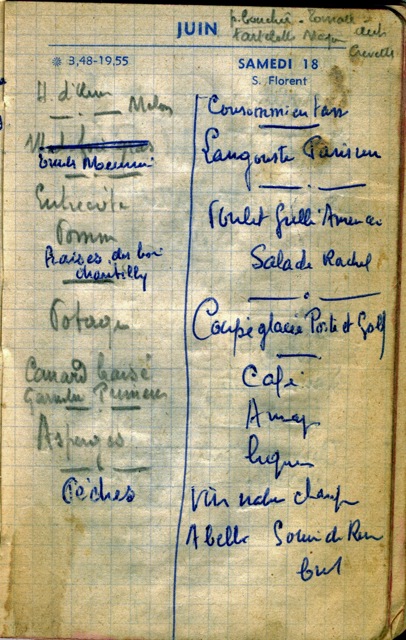
Page left:
Lunch:
Hors d’Oeuvres (I have a post on this here) & Cantaloup
Trout Meunière
Entrecôte & Pommes Frites
(always served with Beurre Maître d’Hôtel)
Wild Stawberries & Fresh Cream
Dinner:
Soup du Jour
Braised duck with Garniture Printanière (diced spring veggies)
Asparagus (most likely served with hollandaise sauce)
Peaches
Page right:
The Banquet Menu
Consommé en tasse — cold consommé served in porcelain cup.
Langouste à la Parisienne — rock lobster in a sort of aspic glazed or a.k.a chaudfroid
Grilled chicken à l’Américaine — chicken crapaudine that is first grilled, then covered in a mustard sauce, then breaded and finished in the oven.
Salade Rachel — according the Escoffier cookbook: Equal parts of truffle shavings, rooster kidneys, celery ribs cut into thick julienne, asparagus tips. Light liaison with a thin mayonnaise.
Coupe Poste & Golf — It could be anything my grandfather felt like making! probably some sort of home made ice cream with liquor a fruits topped Chantilly and served with a cookie)
Café/Armagnac/ Liquors
Vin Nature de Champagne Abelé Sourire de Reims
I would like to make that menu for one of my birthdays! maybe for the big 50!
By the way I thank you very much for your comments about the blog on Facebook, but I would really appreciate if you would comment directly on the blog. Merci!
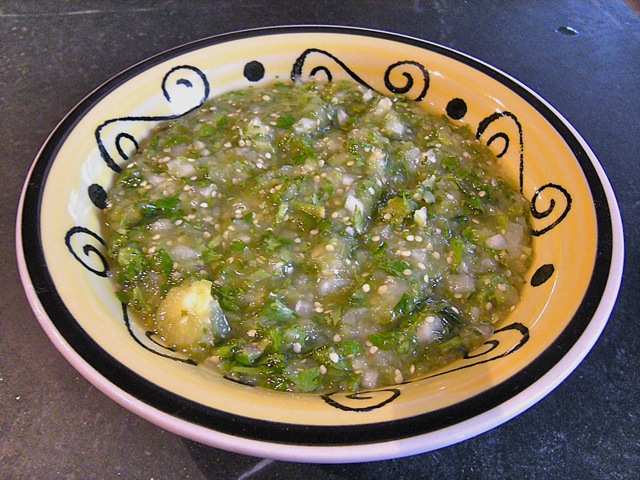


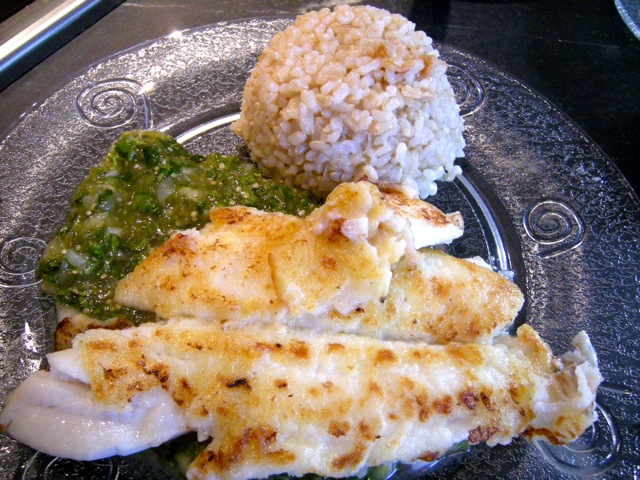

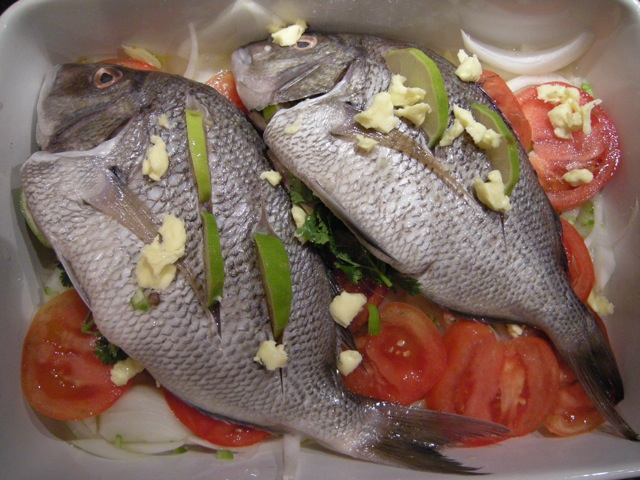
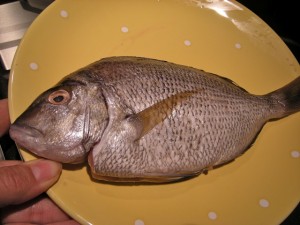
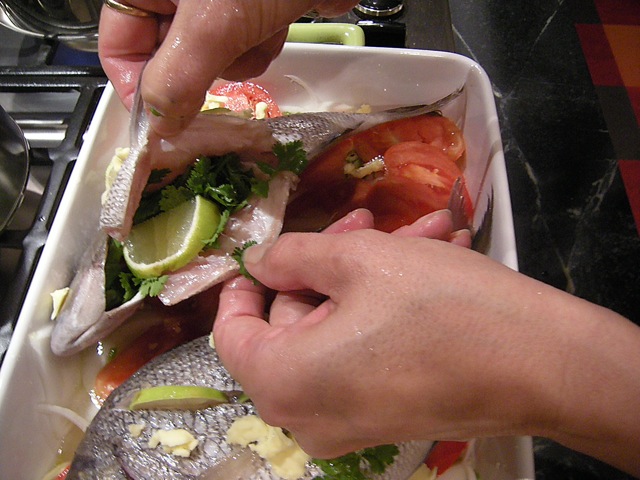

 I was born in this hotel, in my parents’ bedroom just above the action and almost in the midst of it. It was June 18, 1960 at noon; the restaurant was running at full capacity. There was a banquet for a 100 top, the annual banquet luncheon for the Master Accountant Guild of the Southwest France region. The interesting fact is that my maternal grandfather, Maurice Gallot, was the president of the guild! My father didn’t get to see me until after the banquet was under control. My mother and I were in good hands between the midwife and her uncle who was a surgeon. My mother still remembers that my maternal grandfather bought champagne for the entire party! As far as the memory of the birth itself is concerned, she would always say: “C’est le mal joli, quand c’est fini on rit!” “It’s the pretty pain — once it’s over one laughs!.” She is always very positive! In case you are curious to know what was served the day of my birth, here it is taken from my grandfather agenda/menu book. The left side of the page is the regular Menu du Jour and the right side is the menu for the banquet.
I was born in this hotel, in my parents’ bedroom just above the action and almost in the midst of it. It was June 18, 1960 at noon; the restaurant was running at full capacity. There was a banquet for a 100 top, the annual banquet luncheon for the Master Accountant Guild of the Southwest France region. The interesting fact is that my maternal grandfather, Maurice Gallot, was the president of the guild! My father didn’t get to see me until after the banquet was under control. My mother and I were in good hands between the midwife and her uncle who was a surgeon. My mother still remembers that my maternal grandfather bought champagne for the entire party! As far as the memory of the birth itself is concerned, she would always say: “C’est le mal joli, quand c’est fini on rit!” “It’s the pretty pain — once it’s over one laughs!.” She is always very positive! In case you are curious to know what was served the day of my birth, here it is taken from my grandfather agenda/menu book. The left side of the page is the regular Menu du Jour and the right side is the menu for the banquet.
